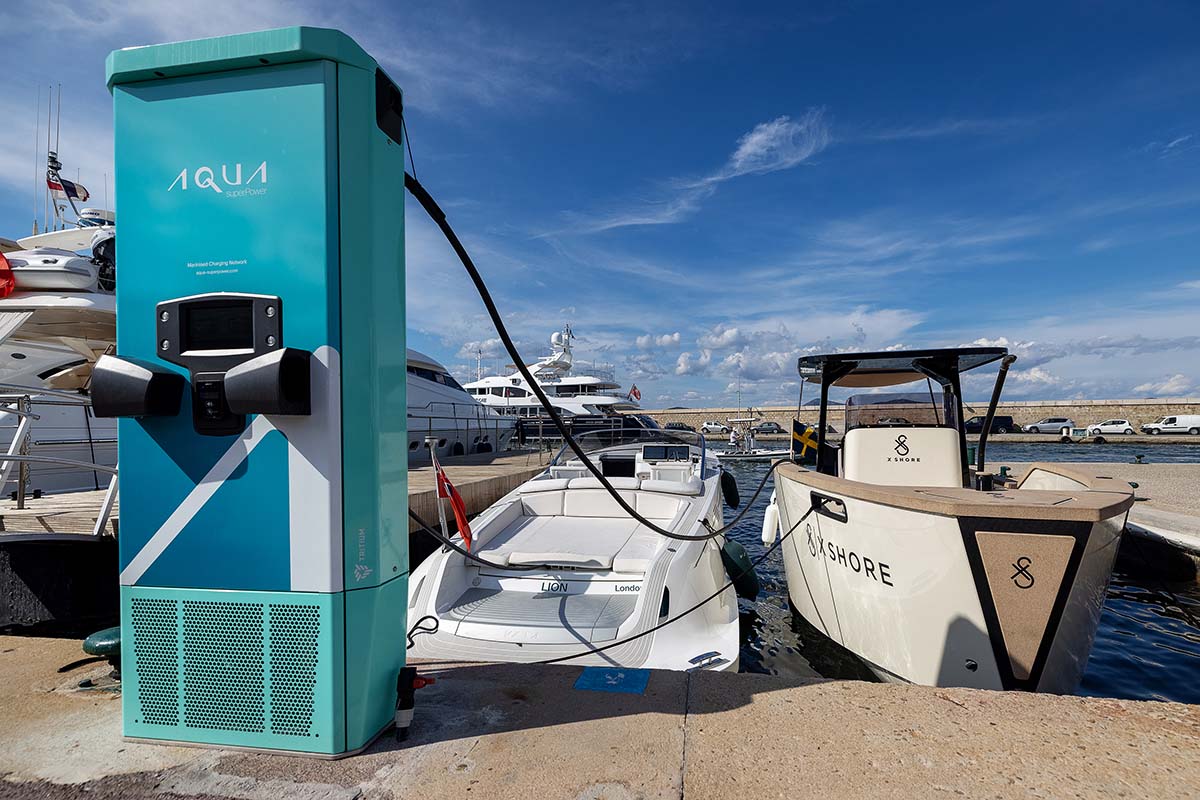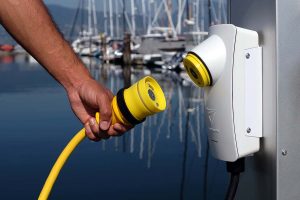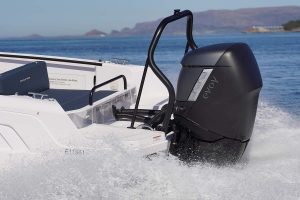
New Association Aims to Assist in the Transition to Electric Propulsion
Published on May 2, 2024The International Electric Marine Association (IEMA) was born from a collective recognition of the need for sustainable practices in marine transportation and operations. One of IEMA’s roles is to help marina owners and operators anticipate what is coming regarding technology and to help them position themselves as leading smart marinas.
“This strategy means helping marinas continue serving their existing clients while attracting a new yet-to-be-discovered demographic,” said Adria Jover, president of IEMA. “Marinas of the near future will be able to make a financial return on investment by selling electricity back into the grid. Marinas will be so much more than mooring and docking.”
Jover believes the best way to preserve the environment and positively impact global health is through innovation and technology. IEMA registered as a foundation in September 2023, and its goals align with the 2030 deadline for shore power connection for large vessels and other regulations mandated by the International Maritime Organization.
“Yes, we are ambitious,” Jover said. “But we’re also realists, not idealists. IEMA is here to do the work, not just talk about it.”
A Valuable Resource
IEMA’s objectives focus on making measurable progress in the wider adoption of electric marine technology and the infrastructure needed to support it.
Jover said the association is a media company as much as an industry-backed non-profit, aiming to become the preeminent source of information for the electric marine industry. IEMA uses verifiable data to help authenticate its points to its audience.

With 60 active members, IEMA represents a broad cross-section of the maritime industry. The association is working toward welcoming the leading top 10 ports worldwide as IEMA members soon.
Current company member Jeffrey Poole is the founder of Tidepoole. He expressed excitement that IEMA is bringing together a wide array of stakeholders – from builders to shoreside to financing – to work together growing the electrification side of the industry.
“If we can think and act logically,” Poole said, “perhaps our next generation will experience a cleaner and just as exciting marine experience as we have today…maybe even better.”
Poole believes IEMA will help bring the right people to the table to solve issues, challenges and perceptions. While many boaters and fishermen drive internal combustion engine (ICE) craft, they still have the desire to preserve freshwater lakes, reservoirs and rivers, he said.
“Eliminating oil and fuel discharge on freshwater outlets is vital for the water table health,” he said. “Yet bringing in higher voltage and increased battery power raises safety concerns.”
Addressing Concerns
He also acknowledged the need to address the concerns of businesses who depend on reliable watercraft.
“Asking the offshore saltwater fisherman to transition from a clean diesel to electric will bring up challenges,” he said. “Distance and range anxiety are probably the biggest.”
Poole said these issues won’t be solved immediately, but the IEMA will help educate the private sector, which can in turn inform legislative bodies of the realities of the industry.
“If we can work through affiliations like IEMA to make the fewest number of mistakes, our children will have the chance to enjoy a more carbon-neutral boating experience and help us further stabilize our oceans and freshwater assets,” he added.
Jovar agreed that lobbying for the needs of the marine industry moving into the future will be imperative at several levels. He said marinas can benefit from being IEMA members through connections, discounts, voting rights and overall direction of the association.

“We see them as an essential part of the conversation,” he said.
“Some ports and marinas are already on course to net-zero programs, while others are still debating the best options,” Jovar continued. “We understand these conversations are clearly necessary for privately owned marinas and clubs. We need to help them understand that viable electric marine technology exists today. This is more than just some pipe dream for the future.”
Ben Sorkin, company member of IEMA and CEO of Flux Marine, said as much conversion to electric as possible is the target IEMA wants to hit.
“With so many gas-powered boats in the water already, there will likely always be some presence in the industry,” he said. “Electric and other alternative energy boats have made significant technological advancements as of late, but offshore and long-haul boating are two examples in which gas still has the advantage.”
Sorkin said desirable aspects of electric boating far supersede the goal of reducing emissions.
“Clean boating is nice and removes the emissions, fumes, noise and gas leakage that greatly harms the environment, but there is so much more to look forward to,” he said. “Gasoline in the marine environment is severely inflated, and the limited amount of fuel docks often leads to long wait times on top of the cost of filling up a tank.”
Giving boaters access to charging stations between uses or overnight drastically reduces that time investment, he said. With fewer moving parts, the need for maintenance is also reduced, making electric boats an especially potent draw for boat owners looking to reduce their maintenance costs.
“IEMA is young,” Jover said. “We’re financially and executive independent, funded by a mix of member contributions and philanthropic donors from all over the world. Any support or help is welcome; our collective power of representation is our best way forward.”
| Categories | |
| Tags |






